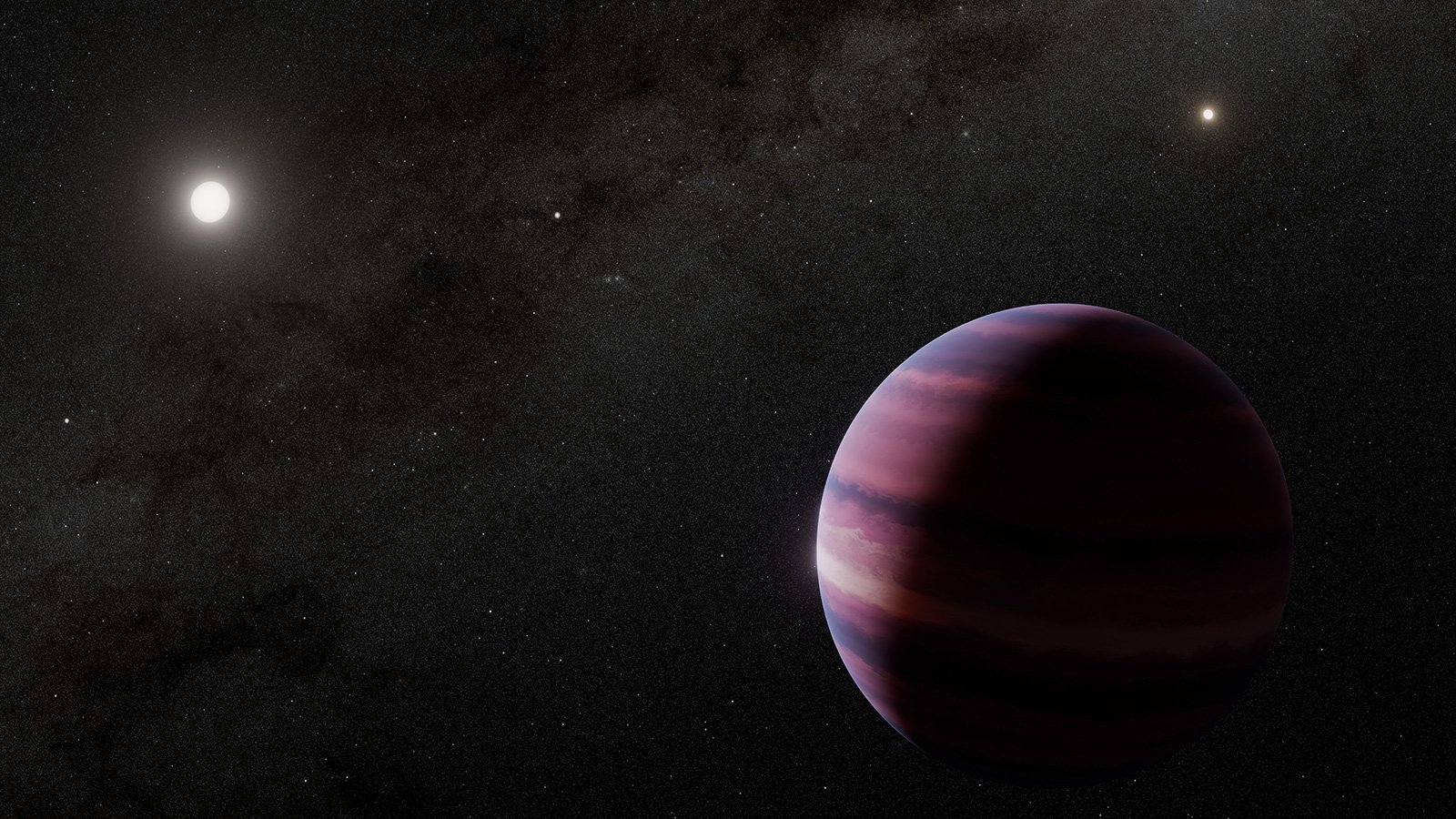Astronomers have used NASA's James Webb Space Telescope to find strong evidence for a planet orbiting a star in the triple system closest to our own Sun. At just 4 light-years away from Earth, the Alpha Centauri star system has long been a compelling target in the search for worlds beyond our solar system called exoplanets.
The system is made up of a close pair of orbiting stars, Alpha Centauri A and Alpha Centauri B, the two closest Sun-like stars to Earth, as well as the faint red dwarf star Proxima Centauri. While there are three confirmed planets orbiting Proxima Centauri, the presence of other worlds surrounding the Sun-like twins of Alpha Centauri A and Alpha Centauri B has proved challenging to confirm.
Now, Webb's observations from its Mid-Infrared Instrument (MIRI), are providing the strongest evidence to date of a gas giant planet orbiting in the habitable zone of Alpha Centauri A. (The MIRI instrument was developed in part by the Jet Propulsion Laboratory [JPL], which is managed by Caltech for NASA). The habitable zone is the region around a star where temperatures could be right for liquid water to pool on a planet's surface.
If confirmed, the planet would be the nearest to Earth that orbits in the habitable zone of a Sun-like star. However, because the planet candidate is a gas giant, scientists say it would not support life as we know it.
The results are reported in two papers accepted for publication in The Astrophysical Journal Letters. The study was co-led by Aniket Sanghi, a Caltech graduate student, and Charles (Chas) Beichman, the executive director of the NASA Exoplanet Science Institute at Caltech's IPAC astronomy center and a senior scientist at JPL. Sanghi worked on the project with his advisor and study co-author Dimitri Mawet, David Morrisroe Professor of Astronomy at Caltech and a senior research scientist at JPL.
"With this system being so close to us, any exoplanets found would offer our best opportunity to collect data on planetary systems other than our own. Yet, these are incredibly challenging observations to make, even with the world's most powerful space telescope, because these stars are so bright, close, and move across the sky quickly," says Beichman.
 Zoom In to Image
Zoom In to Image This artist's concept shows what the gas giant orbiting Alpha Centauri A could look like. Observations of the triple-star system Alpha Centauri using NASA's James Webb Space Telescope indicate the potential gas giant, about the mass of Saturn, orbits the star by about two times the distance between the Sun and Earth. In this concept, Alpha Centauri A is depicted at the upper left of the planet, while the other Sun-like star in the system, Alpha Centauri B, is at the upper right. Our Sun is shown as a small dot of light between those two stars. Credit: : NASA, ESA, CSA, STScI, R. Hurt (Caltech/IPAC)
The team's first observations of the system took place in August 2024 using a device aboard MIRI called a coronagraphic mask. These masks block the glare of a star to enable the direct imaging of much fainter planets orbiting around them. The closer a planet lies to its star, the harder it is to image. While a couple of dozen planets have been directly imaged before, this candidate planet, if confirmed, would be the closest to its host star ever imaged, with a separation of two times the distance between the Sun and Earth, or two astronomical units.
What is more, the candidate planet would be the first imaged around a star that is both the same age and temperature as our Sun.
Another challenge was the close proximity of Alpha Centauri A's companion Alpha Centauri B, whose glare can also mask the dim signatures of orbiting planets.
Ultimately, the team was able to subtract out the light from both stars to reveal a candidate planet more than 10,000 times fainter than Alpha Centauri A that would lie within the habitable zone of Alpha Centauri A.
"The observations were quite challenging, but because this is the closest star system to Earth, it is easier to image a planet this close to its star," Beichman says. "The next closest Sun-like star, Tau Ceti [about 12 light-years from Earth], will be much harder even with Webb."
Based on the brightness of the planet in the mid-infrared observations, researchers say it could be a gas giant approximately the mass of Saturn orbiting Alpha Centauri A in an elliptical path. Beichman says that "the elliptical orbit of the candidate giant planet sweeps through most of Alpha Centauri A's habitable zone, making it unlikely that smaller rocky planets could survive."
Follow-up Webb observations did not reveal signs of the planet; computer simulations by the team suggest that it was likely too close to the star in its orbit to be recovered in those subsequent images. Future observations with Webb, as well as NASA's upcoming Nancy Grace Roman Space Telescope, set to launch by May 2027, should be able to glean more information about the planet candidate.
"If confirmed, the potential planet seen in the Webb image of Alpha Centauri A would mark a new milestone for exoplanet imaging efforts," Sanghi says. "Of all the directly imaged planets, this would be the closest to its star seen so far. It's also the most similar in temperature and age to the giant planets in our solar system and nearest to our home, Earth," he says. "Its very existence in a system of two closely separated stars would challenge our understanding of how planets form, survive, and evolve in chaotic environments."
Read the full story at the James Webb Space Telescope website.
This research was funded by the US National Science Foundation and NASA.






